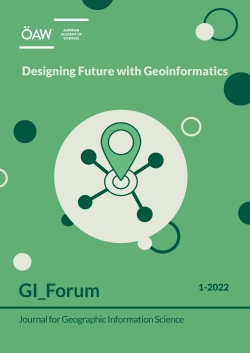Hartwig H. Hochmair,
Eli Brossell,
Zhaohui J. Fu
S. 17 - 32
doi:
10.1553/giscience2022_01_s17
Verlag der Österreichischen Akademie der Wissenschaften
doi:
10.1553/giscience2022_01_s17
Abstract:
Inadequate provision of public transportation services can lead to mobility-related social exclusion for disadvantaged population groups (e.g., lower-income families, the elderly), and limited accessibility to jobs, healthy food, and recreational as well as social activities. The aim of this study is to identify areas in Miami-Dade County, Florida, where disadvantaged populations lack transit-based access to these opportunities, and where transit service improvement could benefit these groups especially. This involves developing a transit-based accessibility index which uses timetable data from three public transit agencies. It also entails devising a vulnerability index based on a combination of socioeconomic variables to identify disadvantaged population groups with regards to mobility. Both indices can be combined into a service provision score which quantifies the presence of populations in need of transit service improvements. Results show that the combination of the different index maps and the application of Hotspot analysis can help to identify areas requiring transit service improvement in order to achieve accessibility equity. The analysis and interpretation of accessibility maps and selected demographic layers, such as percentage of households without vehicle, facilitates the identification of areas with above-average rates of users who rely on public transportation.
multi-modal network, transit equity, GTFS, accessibility
Published Online:
2022/06/29 11:45:59
Object Identifier:
0xc1aa5576 0x003d8807
Rights:https://creativecommons.org/licenses/by-nd/4.0/
GI_Forum publishes high quality original research across the transdisciplinary field of Geographic Information Science (GIScience). The journal provides a platform for dialogue among GI-Scientists and educators, technologists and critical thinkers in an ongoing effort to advance the field and ultimately contribute to the creation of an informed GISociety. Submissions concentrate on innovation in education, science, methodology and technologies in the spatial domain and their role towards a more just, ethical and sustainable science and society. GI_Forum implements the policy of open access publication after a double-blind peer review process through a highly international team of seasoned scientists for quality assurance. Special emphasis is put on actively supporting young scientists through formative reviews of their submissions. Only English language contributions are published.
Starting 2016, GI_Forum publishes two issues a Year.
Joumal Information is available at: GI-Forum
GI_Forum is listed on the Directory of Open Access Journals (DOAJ)




 Home
Home Print
Print
 References
References
 Share
Share
